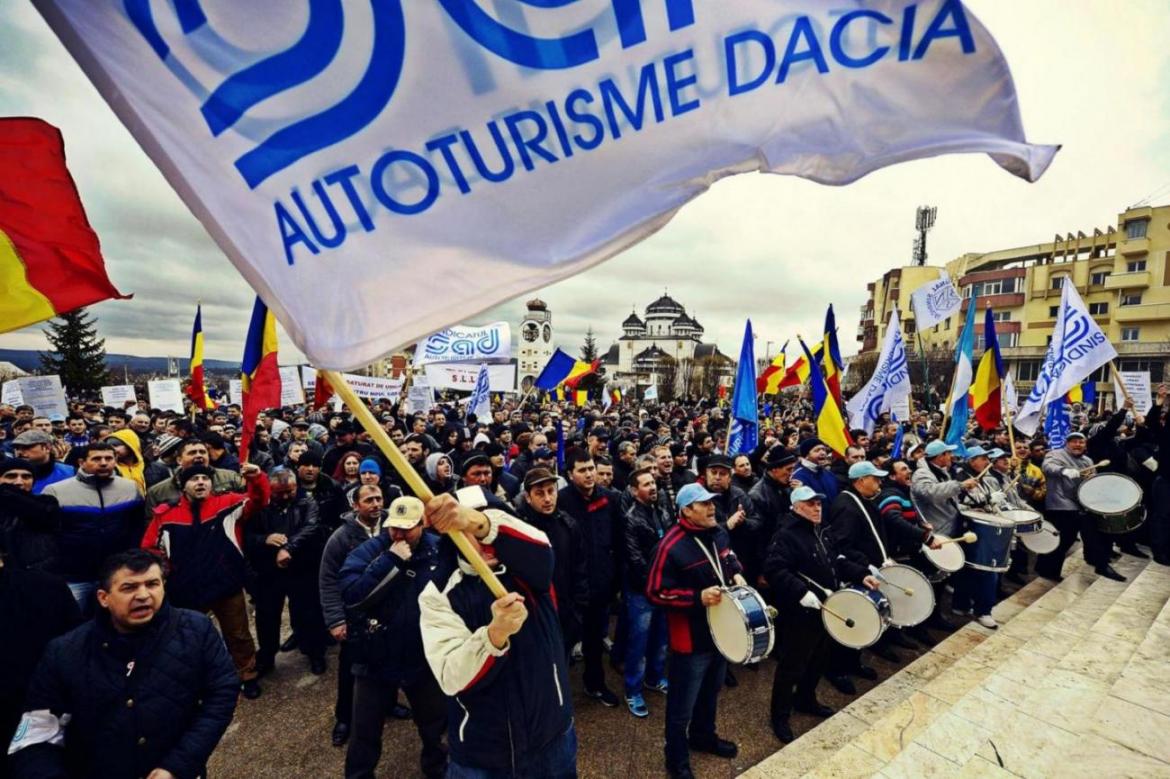Around 5,000 members of a trade union at Romania’s Automobile Dacia protested on March 7, unhappy that the authorities have not started work on a highway connecting the southern part of the country with the central city of Sibiu.
Dacia’s owner Renault has declared that the lack of modern infrastructure in Romania affects its productivity and exports. Automobile Dacia’s General Manager Nicolas Maure has estimated that a highway connecting the plant with the Sibiu-Nadlac Highway in the western part of the country, and further with Hungary and Western Europe, would help the company save €30 on each car it produces in Romania.
The protest took place in the southern Romanian town of Mioveni, where the car plant is located. The plant’s employees fear that the authorities’ lack of action could put their jobs at risk, BNE Intellinews reported.
Romanian road company CNADNR announced on March 7 that the feasibility study for the Pitesti-Sibiu Highway will be completed by December 15 when the design and execution works will start. The highway should be completed in 2021.
Dacia employees have also asked the government to encourage the population to buy new cars, speed up the start of a new vehicle scrappage scheme and discourage the import of second-hand cars.
In October 2015, Maure also voiced concerns about the small local market and the need for the government to encourage purchases of new cars. Most of Romania’s fleet is old and the majority of purchases are of old cars, with imports of used cars outweighing purchases of new cars by around three to one.
“It is a very great weakness in Romania not to have a domestic market for new vehicles,” Maure told the Foreign Investors Summit in Bucharest on October 27.
“The market for new vehicles dropped from 350,000 new cars in 2008 to a bit less than 100,000 [in 2014]. It is not a very robust situation when we have two big plants working 90% for export, so it is crucial that we find ways to restart the domestic market for vehicles.”
The company is also looking at ways to ensure production in Romania remains competitive, as labor costs creep up toward the EU average.
“We will not increase production capacity for the foreseeable future, but we will continue to invest in the lineup, adding more automation to maintain the competitiveness of our plants,” Maure said on the sidelines of the conference.
In addition to the Dacia plant, Romania also hosts a plant run by the US’s Ford. However production of automobiles edged down by 1.1% y/y to 387,177 units last year, with Dacia producing 339,204 and Ford 47,967 units. Most of the production is exported. Dacia’s main export markets are France, Spain and Germany.
Despite the concerns over Romania’s transport infrastructure, German car manufacturer Daimler may consider the country as the location of a possible future plant, as the group is aiming to become marker leader on the premium segment by 2020, Romanian media reported on March 4.
Daimler already owns a gearbox factory in the central Romanian town of Sebes, in which it has invested €300 million.


